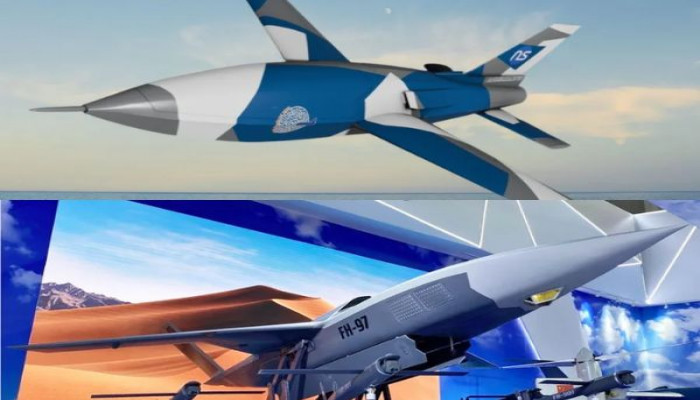Indian Navy to acquire indigenous 'Abhimanyu' unmanned combat air vehicle
- In Reports
- 07:03 PM, Jun 17, 2025
- Myind Staff
The Indian Navy's efforts in integrating unmanned air systems in its carrier air wings received a massive boost with the Abhimanyu drone, developed by NewSpace Research & Technologies (NRT), a company based in Bangalore.
Abhimanyu is developed as the foundation for the Naval Collaborative Combat Air Vehicle (N-CCAV) program. This marked India’s entry into the global trend of deploying “loyal wingman” drones alongside crewed fighter aircraft.
Abhimanyu is a jet-powered, low radar cross-section (RCS) drone, designed to operate as a loyal wingman to operate alongside India’s current and future carrier-based fighters, including the MiG-29K and the upcoming Rafale-Ms. The drone had swept wings, horizontal stabilisers, a single vertical tail, and twin narrow air intakes on either side of the rear fuselage. A distinctive continuous chine-line wraps around the fuselage to reduce radar reflections and improve survivability in contested environments.
While the Abhimanyu had stealth-inspired design elements, it was not a fully low-observable platform. Its design reflected a balance between reduced radar signature and cost-effectiveness. Designers prioritised rapid production and expendability over the advanced stealth of more expensive international drones.
At Aero India 2025, officials displayed Abhimanyu’s performance specifications. It reaches a top speed of approximately 300 knots (550 km/h with an operational range of 1,000 kilometers, and a service ceiling of 19,700 feet (6,000 meters).
Some sources noted that it could have an endurance of up to 20 hours. Abhimanyu supported multirole missions, including ISR (Intelligence, Surveillance, Reconnaissance), kinetic attack (air-to-air and air-to-ground), electronic warfare, and swarm operations.
These specifications make Abhimanyu a modest performer compared to other loyal wingman drones globally. However, its modular design and cost-effective philosophy allow the Navy to deploy it in large numbers and adapt it quickly to changing mission needs.
The N-CCAV program envisioned using Abhimanyu in manned-unmanned teaming (MUMT) with Indian Navy fighters. These drones would act as force multipliers by extending the sensor reach of carrier strike groups, enhancing situational awareness, and offering tactical flexibility for both at-sea and land-based missions. By handling high-risk or complex tasks, Abhimanyu would reduce exposure for human pilots and boost the offensive and defensive power of carrier air wings.
The Indian Navy intended to field a fleet of Abhimanyu drones with different capabilities. Developers planned to achieve this through iterative development cycles, which could lead to specialised variants for surveillance, electronic warfare, strike, and swarming missions. These variants would support both existing and future naval operations.
The Defence Ministry partially funded the Abhimanyu project through its Innovations for Defence Excellence (iDEX) initiative. NRT provided additional internal funding. The current iDEX funding ceiling stood at approximately $2.85 million. However, much more investment would be necessary to bring the drone to operational readiness and develop future variants. The Indian Navy committed to buying a minimum quantity once the N-CCAV became operational, ensuring a baseline for production.
Abhimanyu is smaller and lighter than the HAL Warrior, a twin-engine loyal wingman drone being developed for the Indian Air Force’s Combat Air Teaming System (CATS) program. While Warrior focused on higher performance and payload capacity, Abhimanyu emphasises modularity, affordability, and potential for large-scale deployment. On the global stage, Abhimanyu stood as a lower-end alternative to more advanced platforms like China’s GJ-11 Sharp Sword or the U.S. Navy’s vision for expendable Collaborative Combat Aircraft (CCA) drones.







Comments